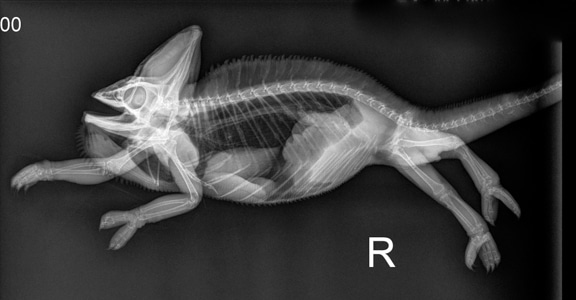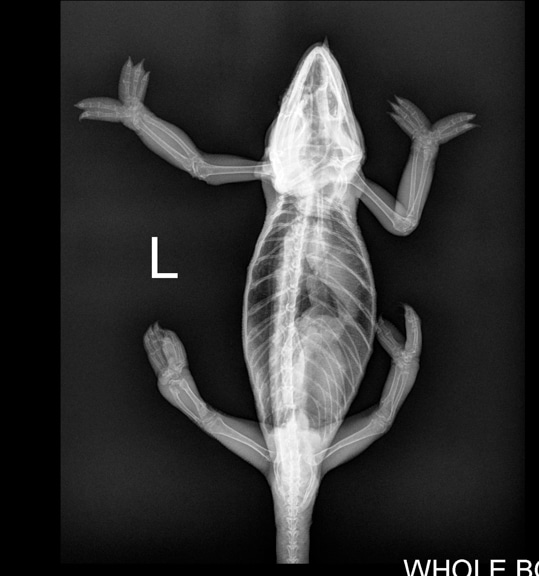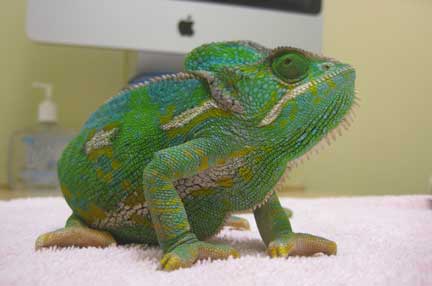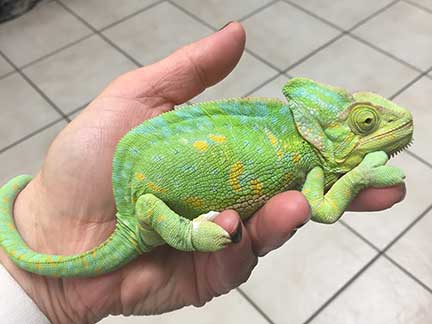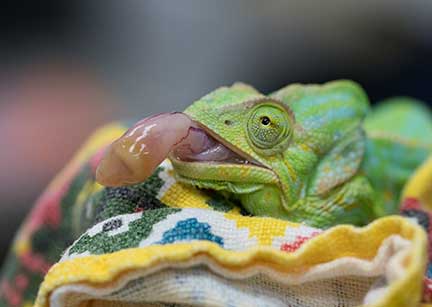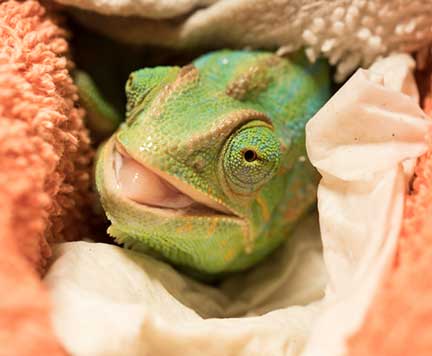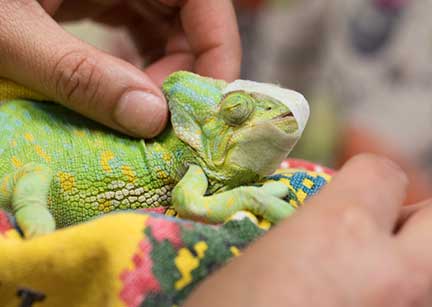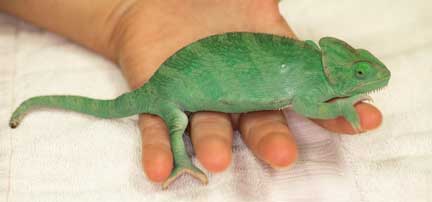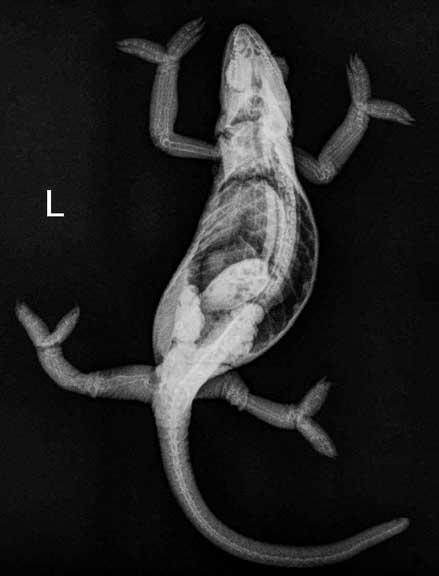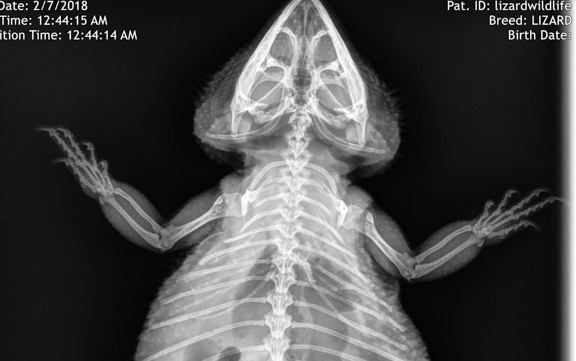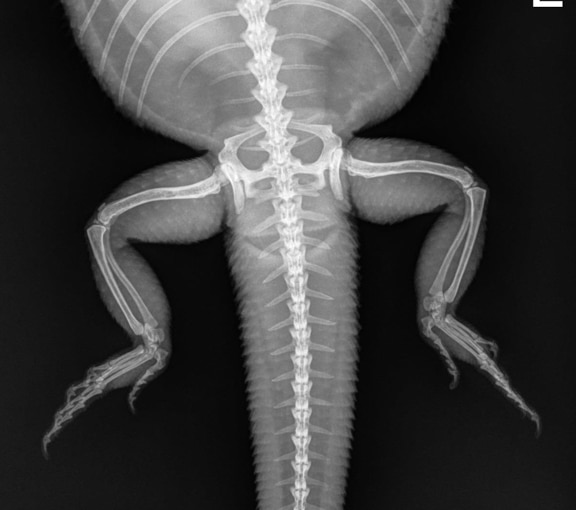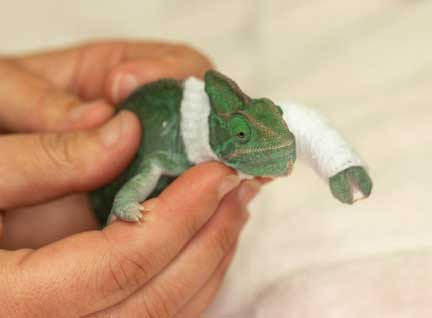Metabolic Bone Disease (MBD), also know as Nutritional Secondary HyperParathyroidism (NSHP), occurs in many reptiles that are non-carnivorous. This page talks about Chameleon Bone Disease, although it is most common in the green Iguana.
You can learn more about our standard of care of sick reptiles from the Association of Reptile and Amphibian Veterinarians.
This is what the bones should look like in a normal and healthy chameleon
Same healthy chameleon in a different view. Use these two radiographs as a basis for comparison when we show you one with MBD.
There are differences in why chameleons get this problem as opposed to MBD in the green iguana, but the main problem of inadequate husbandry stays consistent. You should visit our Iguana page on MBD for much more information regarding cause and treatment of this terrible disease.
Veiled chameleons are highly susceptible to stress, and usually do not do well in captivity. Therefore it is important to pay as much attention to proper husbandry as possible. Veiled chameleons do not drink from a water bowl, and need to be misted. They need a basking spot with a heat bulb that gives them a heat range of 72-80 degrees F.
They should have exposure to direct sunlight, or else a full spectrum UVB (ultraviolet B) light. Adult chameleons should be fed gut-loaded crickets (feeding the crickets collard greens, mustard greens, and squash), dusted with calcium and vitamin powder.
This is what we prefer to see, a normal veiled chameleon with an attitude!
This female veiled chameleon came to us with a problem. She was unable to eat or walk well. Any time we have an ill chameleon we handle them gently because they are fragile.
Notice anything wrong?
Maybe this picture will help in your diagnosis
Her MBD problem is so severe that her tongue just hangs out
She was dehydrated, so we rehydrated her medically with fluid injections We were worried her tongue would dry out, so we dripped water on her on tongue.
We kept her surrounded by warm blankets and soaked paper towels
She was able to pull her tongue into her mouth once she was better after our rehydration and medical treatment
We applied a temporary porous tape bandage to keep the tongue inside when we were not feeding her
In addition to the tongue problem, she is filled with eggs and has fractures of her bones. She cannot lay these eggs because they do not have adequate calcium in their shells and also she is too weak since calcium is needed for muscle contraction. This chameleon is seriously ill, and if we can get the bone problem solved we would think about spaying it to remove the eggs.
The splint we put on her fractured leg
Their eyes are amazing!
This is another chameleon with MBD, although the tongue is not affected on this one
This chameleon is weak and cannot walk
It has a spine curvature, along with fractures in all four legs.
This is the radiograph of this chameleon, see if you can see the fractures on all 4 legs. The bones lack density, and do not show up well on this radiograph, further evidence of the severity of this chameleon’s MBD. Compare it to the normal uromastyx below.
The increased bone density of the front legs is apparent
The rear legs, pelvis, and tail show strong healthy bones
Before we can correct the husbandry and nutritional problems that caused this, we need to stabilize these fractures. It will be done with custom splints that will stay on at least one month.
Talia, our ace RVT (Registered Veterinary Technician) went to work, and made custom splints
It is important to put lots of padding under the splints
The left front leg is getting its first layer of gauze wrap
Half way there, both front legs are done
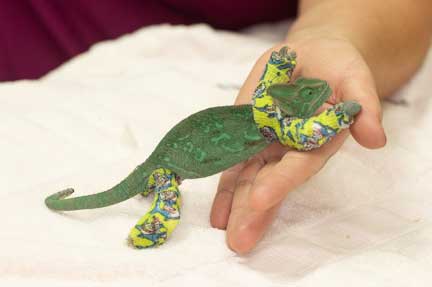
Return to Reptile Diseases Section


